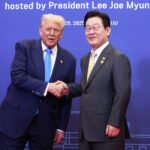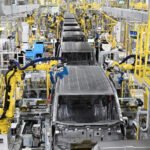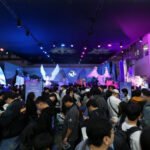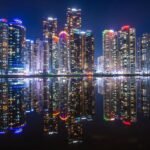
South Korea’s big three shipbuilders on Monday outlined their plans to play a central role in the Korea-proposed “Make American Shipyards Great Again” (MASGA) initiative to help revive the US shipbuilding, repair and maintenance industry.
At the Korea Investment Week 2025 (KIW 2025) forum in Seoul, senior executives from HD Hyundai Heavy Industries Co., Hanwha Ocean Co. and Samsung Heavy Industries Co. sought to answer growing skepticism about the project, which has been dogged by uncertainty over funding arrangements and political wrangling between Seoul and Washington.
The scheme, which envisages Korean participation in US yard construction, workforce training and naval maintenance, repair and overhaul (MRO), is backed by a Korea proposed $150 billion fund.

But disagreements have emerged: Washington favors direct cash contributions, while Seoul wants to include loans and guarantees in the total amount.
Some analysts have questioned whether the project can move forward without a compromise.
TWIN HUBS
Hanwha Ocean outlined a two-track strategy: turning Korea’s Busan and the surrounding South Gyeongsang Province into a Korean MRO hub for US naval vessels, while transforming Hanwha Philly Shipyard Co. in Philadelphia, which it acquired last year, into a frontline production base in the US.

“By leveraging more than 1,000 suppliers in Busan and its surrounding area, we aim to create a specialized cluster capable of handling MRO for 11 US Navy vessels annually,” Choi Jeong-hoon, head of special ship planning at Hanwha, said at KIW 2025, an annual forum organized by The Korea Economic Daily and Korea Investment & Securities Co.
Hanwha plans to invest $5 billion to lift Philly Shipyard’s capacity from little more than one vessel a year to 20, integrating smart and unmanned construction technologies, he said.
Choi also pressed for flexibility on the investment fund: “If the MASGA fund is structured only as a portfolio investment, the benefits will accrue solely to US companies. It should also serve as financing for Korean builders expanding into the US market.”

He said Hanwha plans to enhance its presence in the US by entering the market in partnership with smaller Korean shipbuilding equipment makers.
HD HYUNDAI TO UTILIZE ITS OVERSEAS YARDS TO MEET US NAVY MRO NEEDS
HD Hyundai said it plans to tap its own overseas network to meet the US Navy’s increasing MRO needs.
HD Hyundai has established yards in nine countries, including the Philippines and Indonesia, to counter Chinese cost competitiveness.
“We are developing the Subic shipyard in the Philippines into a new MRO base, capable of handling frigates and patrol vessels,” said Jang Gwang-pil, vice president of HD Korea Shipbuilding & Offshore Engineering Co. (HD KSOE), HD Hyundai’s shipbuilding holding company.

He said the pending integration of HD Hyundai Heavy and HD Hyundai Mipo Co. would allow flexible deployment of docks for both commercial and naval vessels.
“There is a high possibility that HD Hyundai Heavy’s special ship division will work with HD Hyundai Mipo to build warships, including the Aegis destroyer,” he said. “The utilization of HD Hyundai Mipo’s dockyard will become more diverse, from merchant ships to warships.”

SAMSUNG LINKS WITH US PARTNER
Samsung Heavy Industries recently signed with Oregon-based Vigor Marine Group to modernize US Navy support facilities, share MRO services and co-develop vessels.
An MRO specialist, Vigor Marine operates eight docks across five US shipyards.
“The partnership will extend to co-building commercial and naval ships, and to investing heavily in workforce training in the US,” said Lee Ho-gi, a Samsung Heavy executive.

The MASGA initiative is part of a broader $350 billion investment package pledged by Seoul, following Washington’s decision to lower proposed reciprocal tariffs on Korean imports to 15% from 25% in July.
Through the MASGA deal, Korea hopes that greater access to US defense and commercial shipbuilding markets could help reinvigorate its shipyards, which have faced stiff competition from Chinese rivals.
By Woo-Sub Kim, Bum-Jin Chun and Eunhyeok Ryu
duter@hankyung.com
In-Soo Nam edited this article.















